
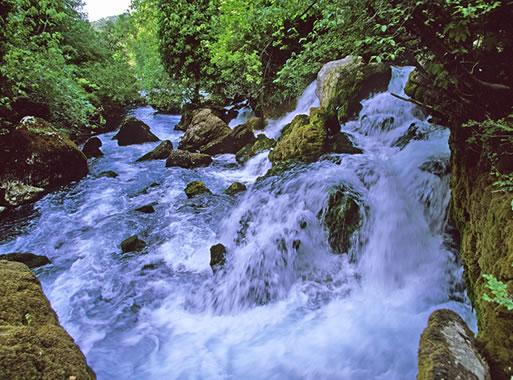
The town of Fontaine de Vaucluse was built up around its spring in a valley at the foot of a cliff of the Monts de Vaucluse. In fact, it gave its name to the department of the Vaucluse - Vallis Clausa or the Closed Valley. The sun-filled little village is perfect for a “Sunday outing”. At your own rhythm, you can stroll around in the coolness coming from the spring, admire the old ruins and small historic monuments, visit the shops selling local and traditional crafts (glass and crystal, stationary, sweets, jewellery and pottery) and the eco-museum of santons or just enjoy a bite at one of the restaurants or ice-cream parlors after having climbed up the gentle slope to the source of the Sorgue river.
On the hit parade of local curiosities, the swelling of the Fontaine de Vaucluse steals the show from Francesco Petrarch. Several illustrious figures, before, during or after their stay on the Vauclusian lands of the famous Prince of Poets, have made the trip and given their poetic discourse. Robert D'Anjou, king of Naples, the Colonnas, friends of Petrarch, and Philippe de Cabassole led the way. Then followed Julien de la Rovère, also known as Julius II, in 1497, and other legates in the 16th century like Ippolito de Medici and Alexander Farnese, not to mention poets and writers such as Alexander Dumas, Sainte Beuve, Mistral, René Char, etc. Their main concern, perfectly understandable : the exact origin of the Fountain. Indissociable from the name of this village at the zenith of the region's touristic curiosities, Francesco Petrarch is one of the leading attractions in Fontaine de Vaucluse. A stop at the library museum, which is devoted to him, will let you discover this immense author of Italian literature.
Saint Veran is the other main figure in Fontaine. A church of the same name is dedicated to him, where Saint Mary is also venerated. The visitor enters through a door surmounted by an oculus. Inside, he or she will discover a 14th century nave of three bays and a vault, called a "cul de four", characteristic of Provençal Romanesque chruches. Two magnificent fluted columns of Roman origin are the star attraction of the tour. Outside, the eye meets, dumbfounded, a strange bestiary (lion, eagle, bat, fox, cow) on an upper part of the building next to enigmatic masks and double human heads. Saint Veran's tomb can be found in the "Cella". A small tabular altar from the Merovingian era and a statue of the Saint striking down the "couloubre", half dragon, half serpent, end this tour that promises a thousand surprises.
Fontaine de Vaucluse's heritage has grown richer in recent years by a group of Museums of some interest.
The Musée de l'Appel de la liberté, also called the "Museum of the Resistance", evokes the evryday life of the French during the German occupation, the resistance movement in the Vaucluse as well as the engagement of writers and artists during that period. A detour by way of the Musée Historique de la Justice et des Châtiments (Museum of the History of Justice and Punishment) lets you familiarize yourself, in all safety, with diverse instruments of torture and executions. Also to see, to better better imbue yourself with the spirit of the place : "The Subterranean World of Nobert Casteret" (an amazing collection of speleological sites and material) ; "Vallis Clausa", an eco-museum about the once flourishing paper mills ; and masses of archaeological details scattered about along the paths of bucolic walks and romantic strolls. Among the vestiges, you can still see the ruins of the castle of the bishops of Cavillon, above the village, as well as two cave dwellings one of which, the Bastide de la Beaume, is practically aristocratic.
Just a reminder that, in summer, many tourists flock here and parking is difficult with most car parks charging a fee.
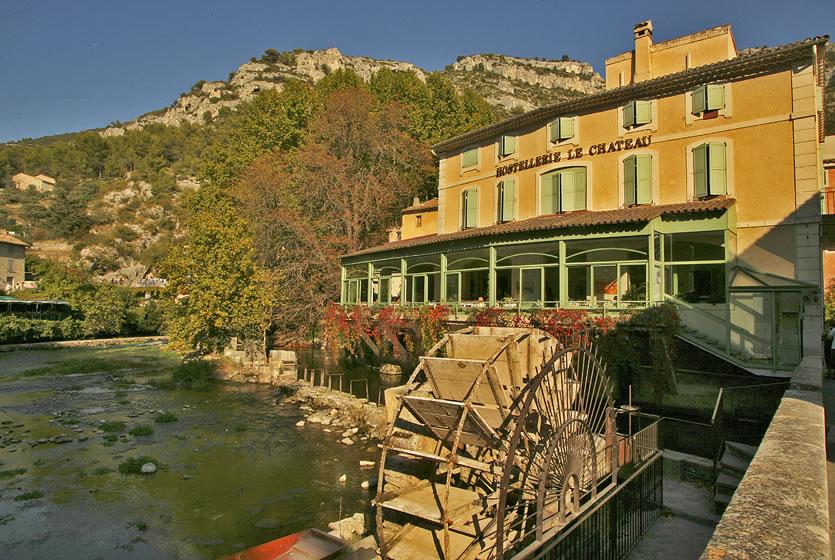
Paddle wheel in Fontaine de Vaucluse
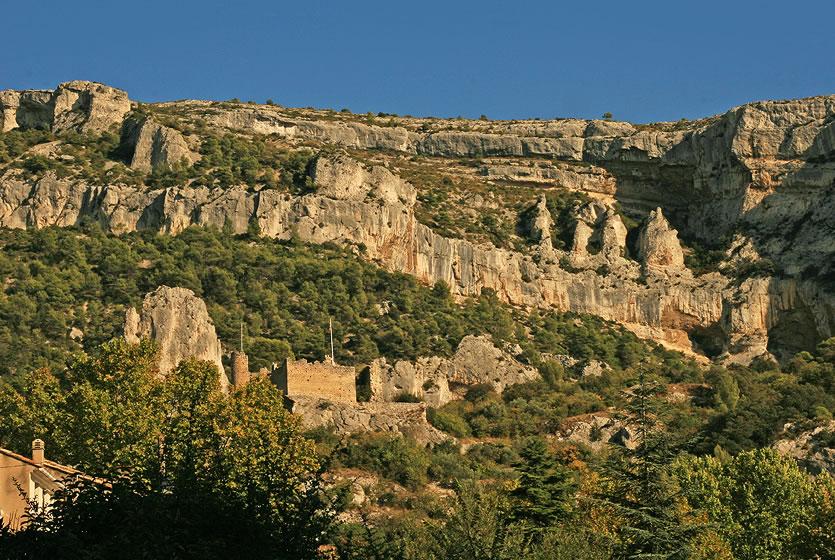
The Monts de Vaucluse
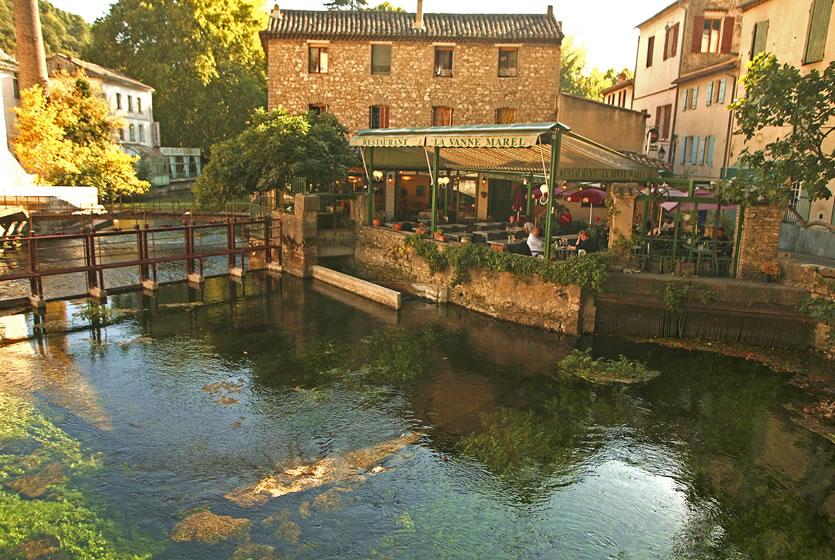
The river Sorgue in Fontaine de Vaucluse
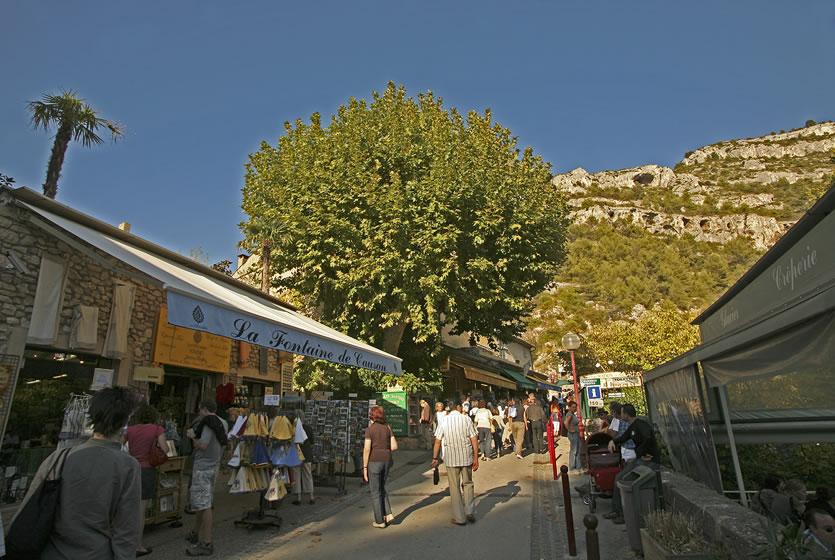
In the streets of Fontaine de Vaucluse
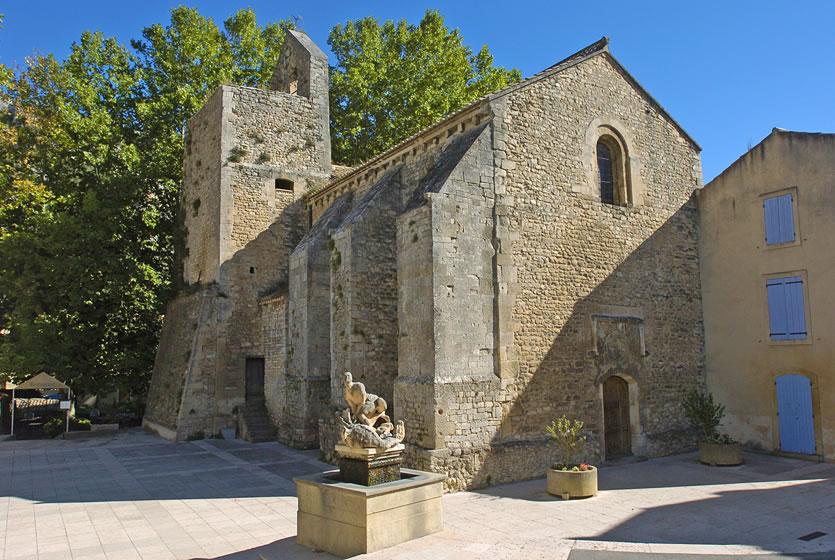
Church in the village of Fontaine de Vaucluse
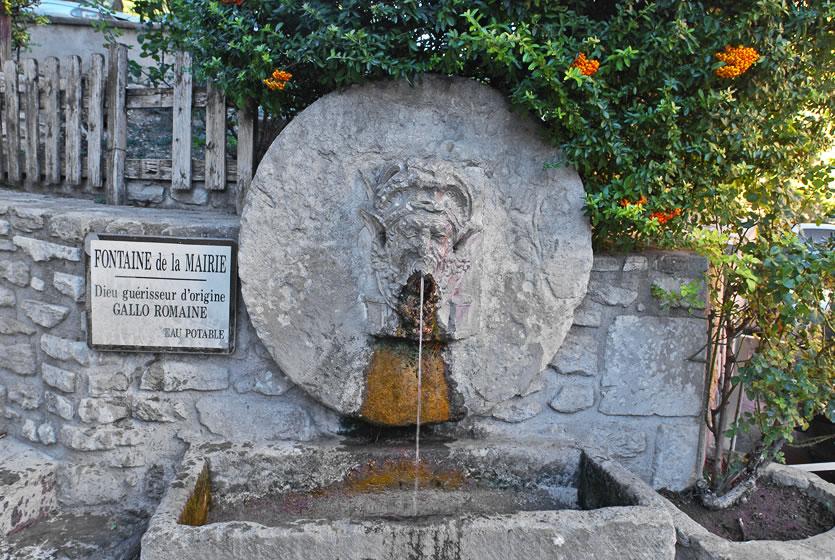
Fountain in the village of Fontaine de Vaucluse
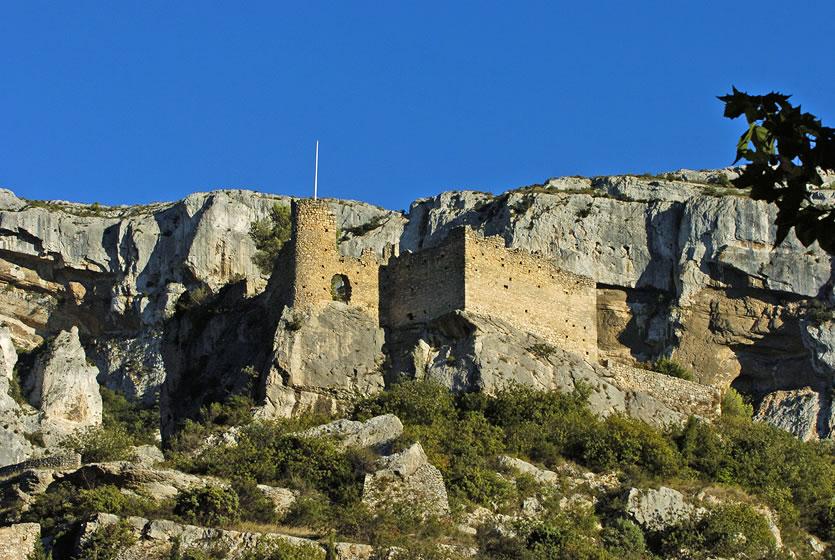
The castle of Fontaine de Vaucluse
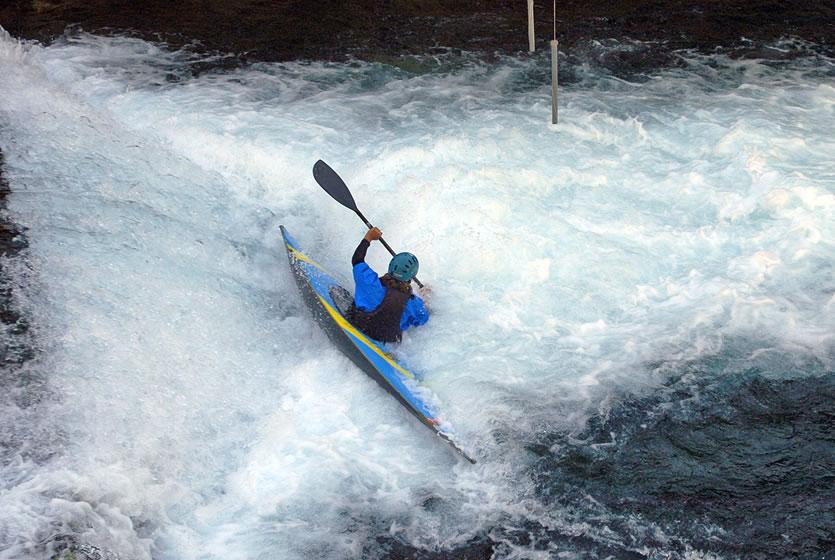
Kayaking on the river Sorgue
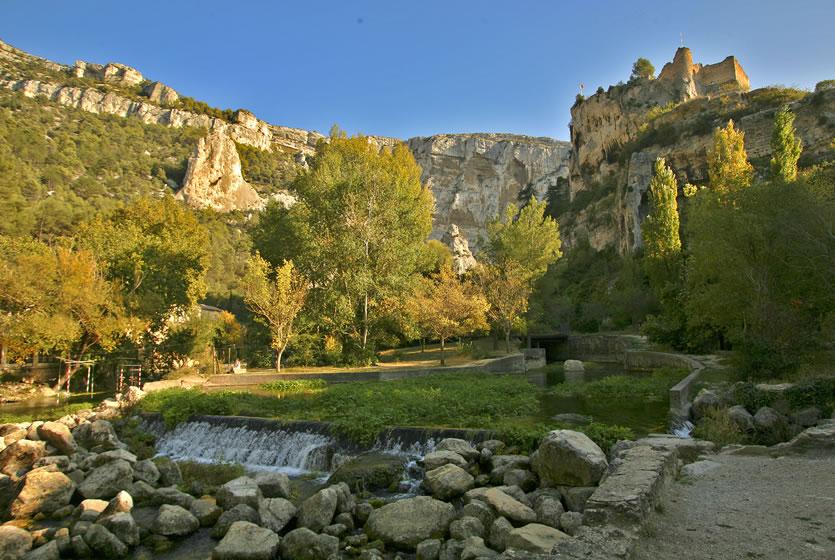
Landscape around Fontaine de Vaucluse
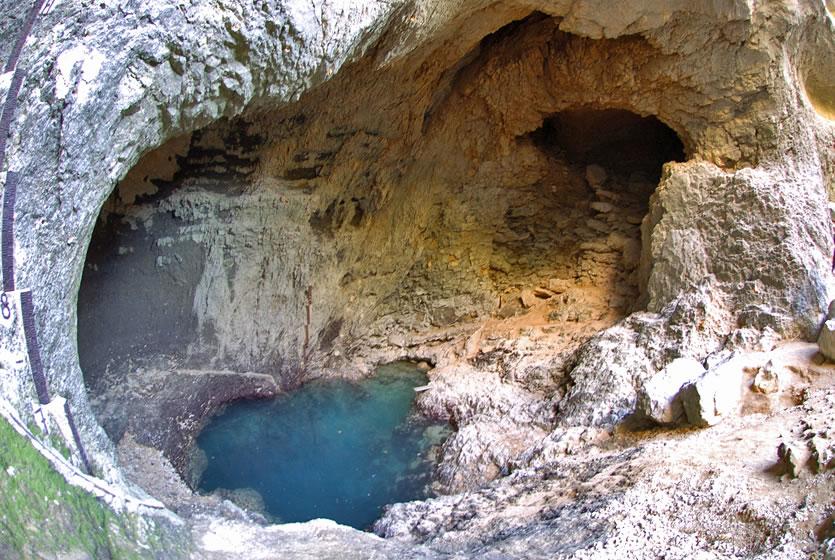
The source of Fontaine de Vaucluse
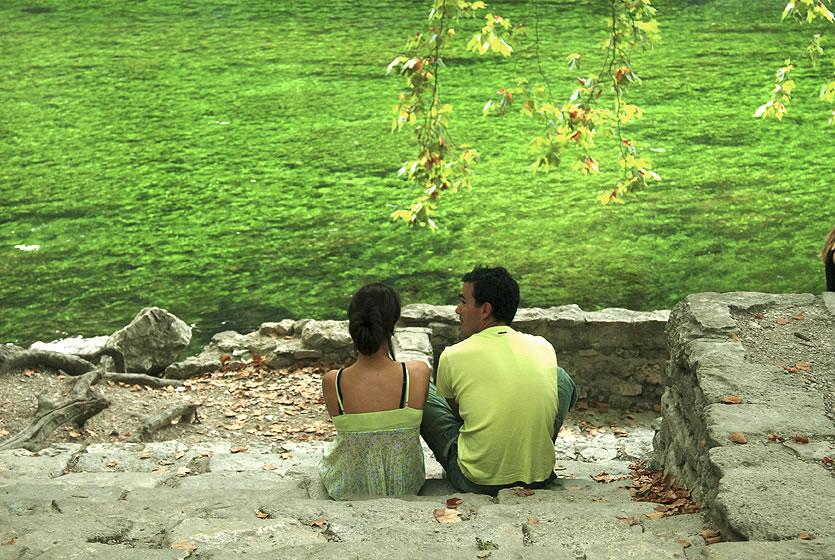
Lovers on the riverside of the Sorgue
Art of living
Gastronomy, markets of Provence, regional products, Christmas traditions, celebrities of Provence....